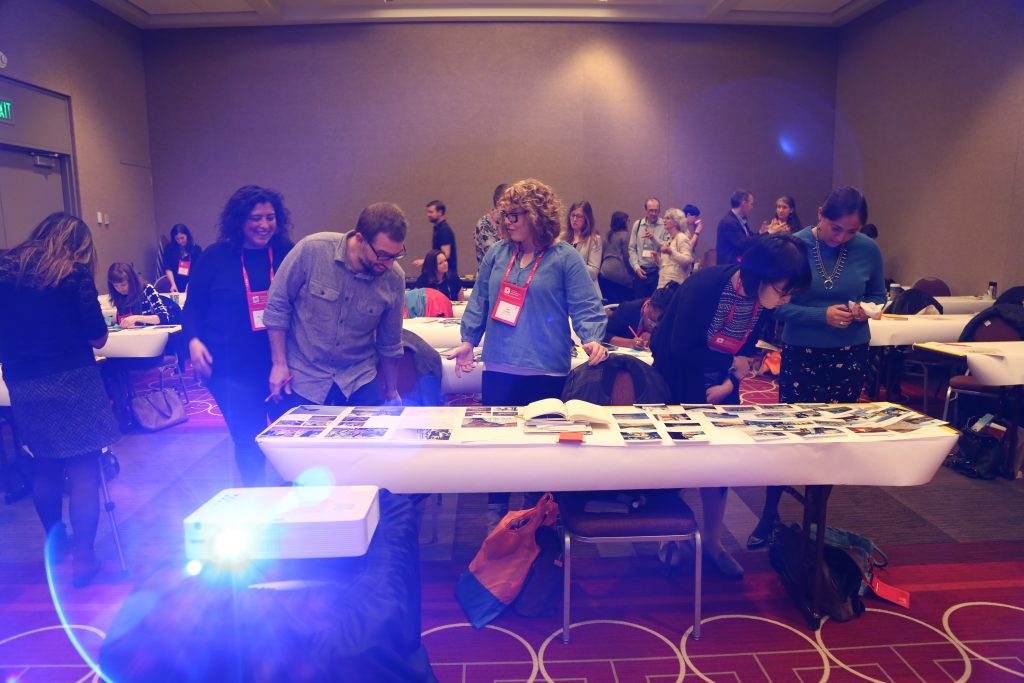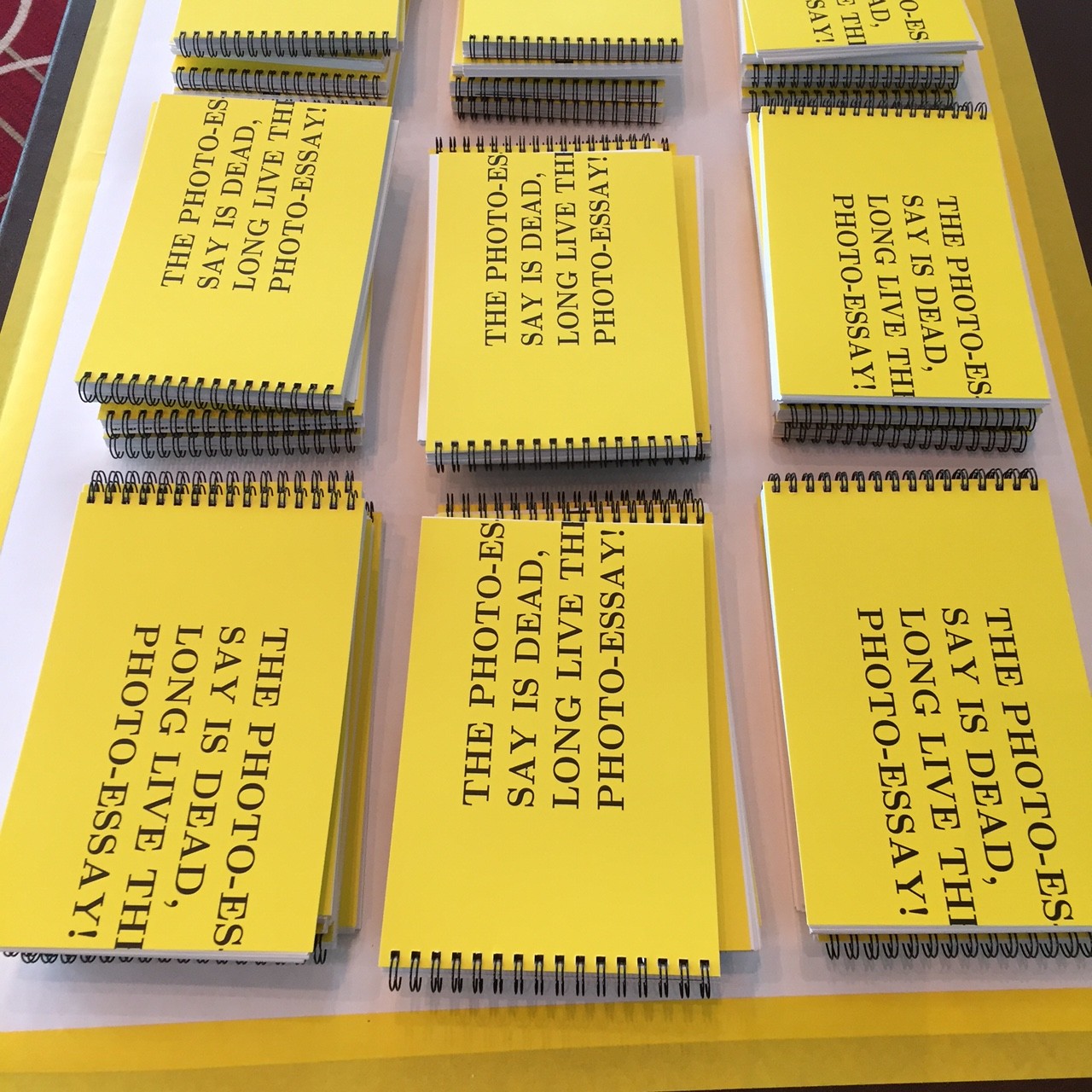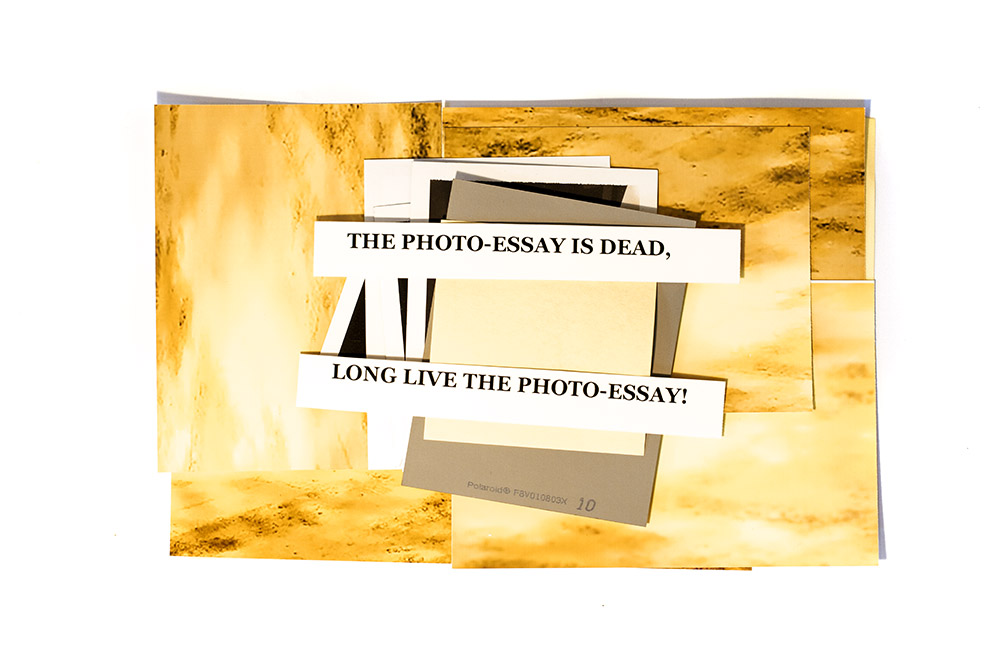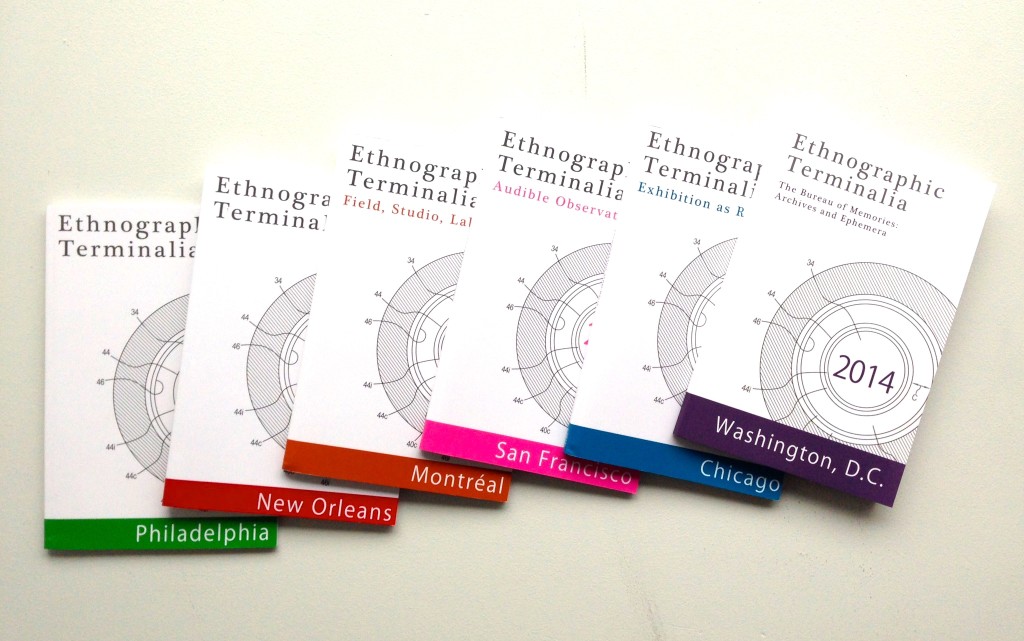Workshop: “The Photo-Essay is Dead, Long Live the Photo-Essay!”
Meetings of the American Anthropology Association, 2016
Minneapolis MN
Thursday, November 17, 2016 9:00-4:00
See documentation of the workshop and an e-version of the zine here!
Presenters: Donna De Cesare, Lee Douglas, Aubrey Graham, Teresa Montoya, Chad Rutter, Stephanie Sadre-Orafai, Kate Schneider, and Jeffrey Schonberg

Overview
The Ethnographic Terminalia Collective invites submissions by photo-essayists working within an anthropological idiom to present their photo-essays at a full-day workshop at the 2016 AAA Meetings in Minneapolis. The full-day workshop is designed for creative and engaged participation from both participants and presenters. It is structured around three sessions each of which features the presentation of a photo-essay, a thought-provoking discussion of photography in Anthropology, and facilitator-led group activity. In the course of the day up to thirty workshop participants and six presenters will collectively contribute to a zine (an open-access and limited print-edition workshop publication) that will be launched and distributed at a reception on Saturday, Nov. 19th. The zine will function not only as a document of the workshop but also a formal object around which we explore the past, present, and future of the photo-essay in Anthropology.
Building on our art-anthropology experiments in off-site locations, this year we return to the AAA conference site to re-examine the photo-essay within anthropological, photographic, and publishing communities. Emulating our recent workshop and rapid-publication project (see http://ethnographicterminalia.org/terminus), the Ethnographic Terminalia Collective invites you to join us in actively considering how experimentations at the intersection of art and anthropology might function as prototypes for thinking about the future of the photographic image in anthropology. We are all literally publishing at the terminus — the end of publishing agreements, the end of print, the end of things as they have been. How might the photo-essay work as a prototype for collectively envisioning a future of visual anthropology?
Rationale
Photographs have been a component of anthropological practice since its earliest formation. Their popularity over the past 150 years in monographs, journals, exhibitions, and now on the Internet, has increased dramatically. While photographs seem to be everywhere there has been little serious and sustained critical engagement with modes of presentation and publication in the context of visual anthropology. For over a decade, the internet has increasingly become a rapid and inexpensive way to share photographs but there is little discussion about the forms in which they appear and how people engage with them. Due partly to cost, the photo-essay has never become prevalent within academic publications. Furthermore there is little clarity around the definition of a photo-essay especially in the context of anthropology. This is precisely what interests us. Our academic conventions for sharing photographs have been cemented around a limited number of typically black and white images in a journal article or monograph. It is only within the last decade that we’ve begun to see anthropological photo-essays published on-line and these often seem to be either ghettoized within the structure of the journal’s website or overlooked by readers unfamiliar with the genre. Meanwhile within journalism and documentary photography there has been a surge of experiments and formal endeavors.
We believe that still photographs are on the cusp of finding new importance in anthropology in the form of the photo-essay, in particular as the serial nature of photography is being tested out within digital infrastructures on the Internet. For example, the journal Cultural Anthropology recently launched a photo-essay section of their journal; other major journals, now investing in digital infrastructures, are leveraging the Internet to share photographs. How digital forms and cross-disciplinary engagements with photographic representations are re-shaping aesthetic and ethical commitments to the photo essay remains unclear. However, we do know that more and more anthropologists use cameras in the field and many students are keen to study visual methodologies. As a result, the criteria for evaluating their critical and aesthetic contributions have yet to be fully developed. Further, the creative potential for the photo-essay to be realized in new formats and contexts is as yet generally unexplored. Ethnographic Terminalia has had a sustained engagement with contemporary art since 2009; in the workshop, we will bring artists and anthropologists together to appreciate the degree of sophistication and variety of experiments in what might be loosely considered the photo-essay.
Workshop Structure
Ethnographic Terminalia is committed to serious play; our workshops are carefully designed to foster lively and generative spaces for critical collective exploration of a topic, thesis, or question. Facilitated by the Ethnographic Terminalia Collective, up to thirty participants and six presenters will work collectively throughout the day to generate the materials for a zine in the form of a rapid prototype publication. This workshop is organized into three sessions, each with: 1) an essayist exploring their work in the form of a single photo-essay; 2) a provocateur who will critically explore some element of the photo-essay; and 3) facilitated activities and open time for participant reflection on and annotation of works in progress, discussion, and contribution to the workshop publication.
Before the workshop, photo-essayists and provocateurs will be asked to submit creatively designed page spreads featuring photo-essays and discussions. These will be included in the zine and printed for annotation during the workshop. Participants are also encouraged to print photographs from their own photo-essay works-in-progress and bring them to work with throughout the day.
During the workshop, presenters’ photo-essays will be installed for viewing and annotation. Participants and provocateurs will be invited to add commentary and other ephemera (using photography, photo printers, drawing, social media posts, annotation, and so on) to further contribute to the conversation. These contributions will be documented for inclusion in the publication. Additionally, workshop participants (who are not official presenters) are invited to bring their own photo essays-in-progress to contribute to the workshop activity, and which may be included in the publication.
After the workshop the Ethnographic Terminalia collective will complete the design and layout of the zine. We will print copies for distribution on Saturday afternoon (Nov. 19th) at the AAA Meetings at a special event and zine launch supported by the Society for Visual Anthropology. All participants will receive a copy of the zine, as will a limited number of reception attendees. An open access digital copy of the zine will be archived on the Ethnographic Terminalia website. You can see an example of the publication “Terminus: Archives, Ephemera, and Electronic Art” that we produced at our last workshop in Vancouver, British Columbia in 2015. http://ethnographicterminalia.org/terminus.

Workshop Publication ‘The Photo-Essay is Dead, Long Live the Photo-Essay’, launch event, Minneapolis 2016. Photo by Kate Hennessy.


